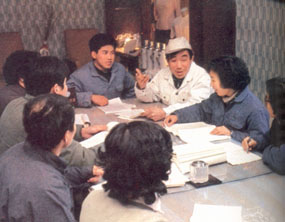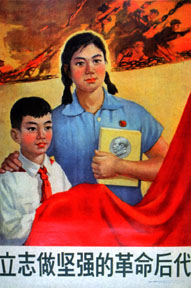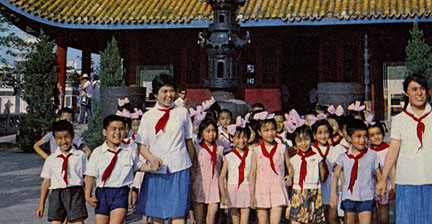|

Political leaders were not the only
ones to wear Mao suits. People of both genders, in all areas, and in all
different kinds of professions began wearing variations of the Mao suit on
a daily basis.
How do these outfits seem different
from those worn by the political leaders above? Do you think these
differences or the uniformity of the clothes of this period reflected the
social structure of China?
|
Factory cadres at a
meeting
source
|
|
|
Why
do you think some of the men in these two scenes from the 1980s wear Mao
jackets and others do not? |
|

|

|
|
|
|
Discussing building
plans
source
|
|
|

Children's clothing, while not generally called Mao
suits, could also indicate political allegiance. The red scarves seen around the
necks of the children in these two pictures indicate that they are young
pioneers. The scarves became important symbolic objects to many of
the children in this period.
The label on the poster to the left reads "Set
your mind on becoming a strong revolutionary successor." |
|
|
|

|
Children on a field trip to a
temple, circa 1980
source |
Move
on to the Western-Style Suit 
|




